
Self Teaching Unit:
Parallel Structure
copyright 2006, 2004 Margaret L. Benner All rights reserved.
Sentence elements that are alike in function should also be alike in construction. These elements should be in the same grammatical form so that they are parallel.
Using parallel structure in your writing will help with
1) economy 2) clarity 3) equality 4) delight.
Here are some examples of parallel elements

These elements, on the other hand, are not parallel

Used in a sentence, they create a jarring effect and produce writing with unclear emphasis and meaning. We call such an error "faulty parallelism."
Writers generally use parallelism as a technique in the following five ways.
1. With elements joined by coordinating conjunctions, especially and, but, and or.
Examples of parallel words
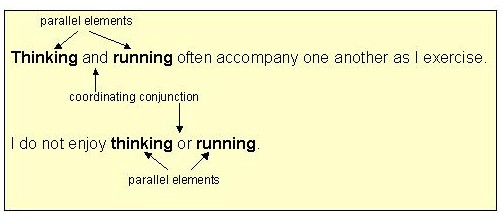
Examples of parallel phrases
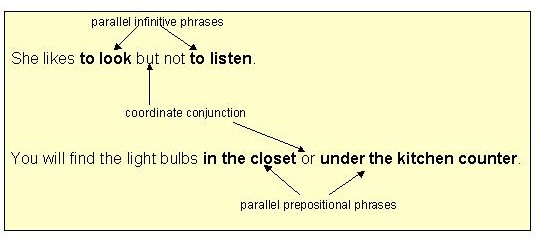
Examples of parallel clauses
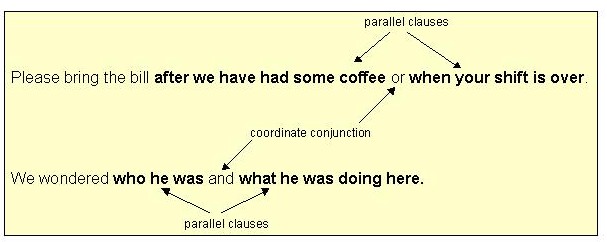
The examples below show how to repair faulty parallelism.
Example #1

Example #2

Click on the link below to complete an exercise on parallelism with coordinate conjunctions.
2. Use parallel structure with elements in lists or in a series.
A series is a group of three or more elements in a row. The last element in the series is connected to the others with one of these coordinating conjunctions: and, or, but (not), or yet (not).
Commas should be placed between each element in the series and before the coordinating conjunction.
Examples of series 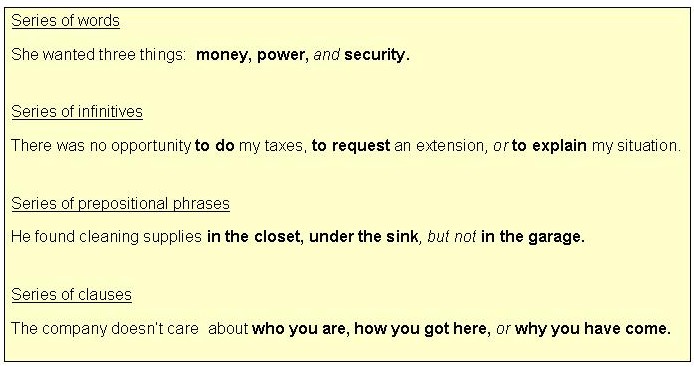
As the examples below show, a series whose components are not in parallel format sounds awkward and may cause misunderstanding.
Example #1

Example #2
Note that in the corrected versions of example #2, you may choose to repeat the "to" or to omit it.
Click on the link below to complete an exercise on parallelism with elements in a series..
3. Use parallel structure with elements being compared. (X is more than / better than Y)
When we compare things, we often use words such as more, less, better, and worse, We connect the items being compared with words like as and than.
Note the comparison methods in the examples below.

The elements being compared are parallel to one another:
driving is parallel to flying
Miriam's ability to is parallel to her resolve to
How you live is parallel to how much money you make
Comparing items without using parallel structure may cause confusion about what is being compared to what.
Repair faulty parallelism in comparisons by making one element of the comparison parallel to the other.

Note that you may choose to change either element to match the other.
Click on the link below to complete an exercise on parallel structure with elements in a comparison.
4. Use parallel structure with elements joined by a linking verb or a verb of being.
Joining elements with linking verbs or verbs of being suggests a completing of the first item by the second one. Often, in fact, an equality between the two is being set up, as the examples below illustrate.
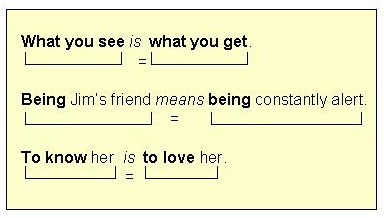
Repair faulty parallelism with linking verbs or verbs of being by making one element of the equation parallel to the other.

Click on the link below to complete an exercise on parallel structure with linking verbs or verbs of being.
5. Use parallel structure with elements joined by a correlative conjunction.
These are the major correlative conjunctions:
either / or neither / nor both / and not only / but also
Correlative conjunctions work in pairs.
Whatever grammatical structure follows one must be parallel to the grammatical structure that follows the other.
Examples with either / or and neither / nor

Examples with both / and

Examples with not only / but also

Repair faulty parallelism with correlative conjunctions by making one structure parallel to the other as shown below.
With either / or

With neither / nor

With both / and

With not only / but also

Remember: Parallelism in sentence construction helps to create economy, rhythm, emphasis, and clarity in your writing. Use this writing technique to your advantage!
You have now reached the end of this self-teaching unit. To see how well you have learned the methods for recognizing and repairing parallelism errors, complete the POST TEST.